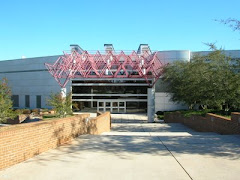Questions about geosocial apps: See Stephen's Lighthouse at http://stephenslighthouse.com/ March 21, 2010 entry which discusses geosocial apps. He discusses:
1. Foursquare
(Works for iPhones, Blackberries, Androids)
2. Gowalla
(Works for iPhones, Blackberries, Androids, Palm)
3. Loopt
(Works for iPhones, Blackberries, Androids – US phone numbers only)
The apps are good for:
1. finding friends in close proximity to where you are – serendipitously. Hey, these are apps that have the potential to increase your face to face interactions!
2. getting coupons (and ads about sales and specials) in context that match the shops you’re in or near – like Starbucks, Lord & Taylor, or whatever.
3. finding new restaurants, bookstores and coffee shops nearby.
4. being told your books you have on hold are ready when you’re in the vicinity of your library!
5. finding your local library and programming.
6. figuring out how to get through the huge ALA, SLA or SXSW/NXNW conferences.
7. finding events in your area.
Monday, March 22, 2010
Thursday, March 4, 2010
Women and Social Movements, Scholar's Edition
March is Women’s History month. Alexander Street Press has madeand to celebrate, Women and Social Movements in the U.S., 1600-2000, Scholar's Edition, freely accessible for the entire month. Click http://wass.alexanderstreet.com for access.
A mainstay of women’s history scholarship and teaching in universities worldwide, this online collection is edited by Professors Kathryn Kish Sklar and Thomas Dublin of SUNY Binghamton. This extensive collection of primary historic documents, books, images, scholarly essays, teaching tools, and book and Web site reviews documents the history of women’s activism in public life, and is one of the most heavily visited resources for women’s studies and for U.S. history on the Web. Organized around document projects written by leading scholars, the collection is a powerful research and classroom tool designed to help users develop the skills needed to analyze primary documents and conduct research. Document projects are organized around interpretive questions, each with 20-50 primary documents that address the question.
A mainstay of women’s history scholarship and teaching in universities worldwide, this online collection is edited by Professors Kathryn Kish Sklar and Thomas Dublin of SUNY Binghamton. This extensive collection of primary historic documents, books, images, scholarly essays, teaching tools, and book and Web site reviews documents the history of women’s activism in public life, and is one of the most heavily visited resources for women’s studies and for U.S. history on the Web. Organized around document projects written by leading scholars, the collection is a powerful research and classroom tool designed to help users develop the skills needed to analyze primary documents and conduct research. Document projects are organized around interpretive questions, each with 20-50 primary documents that address the question.
Subscribe to:
Posts (Atom)



